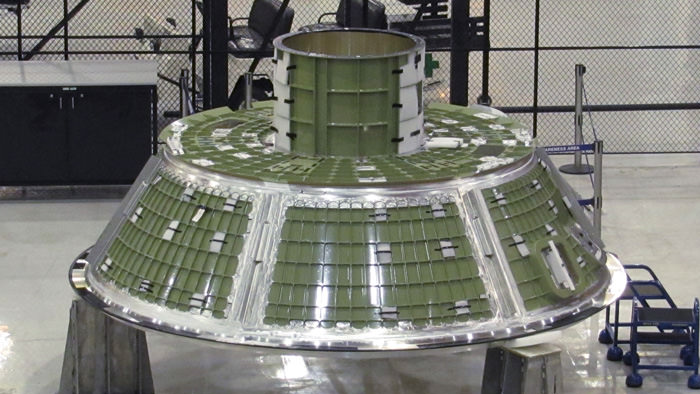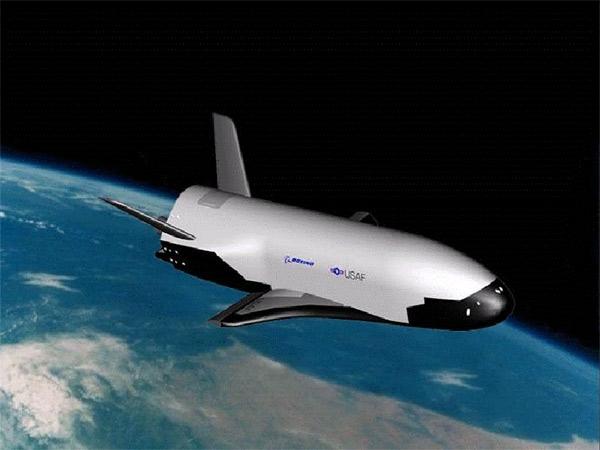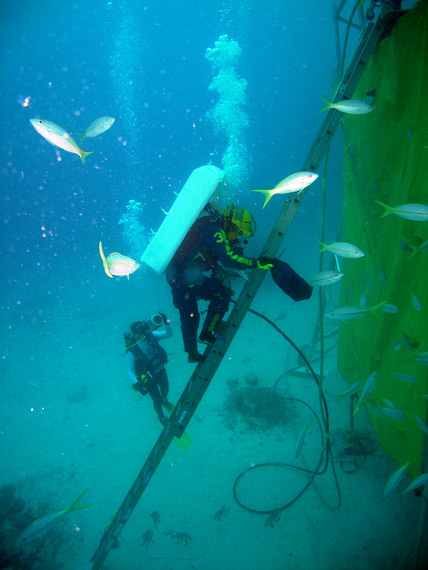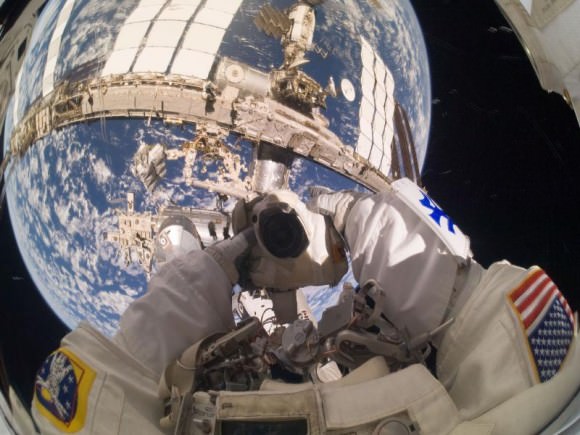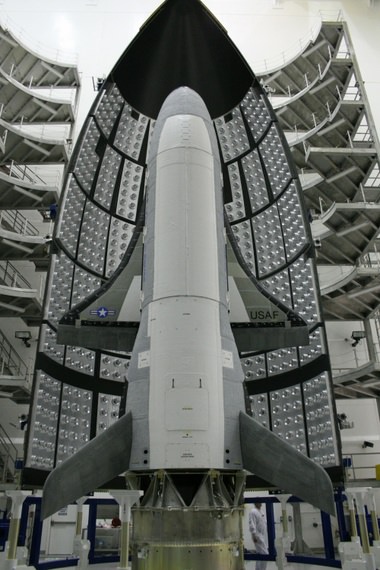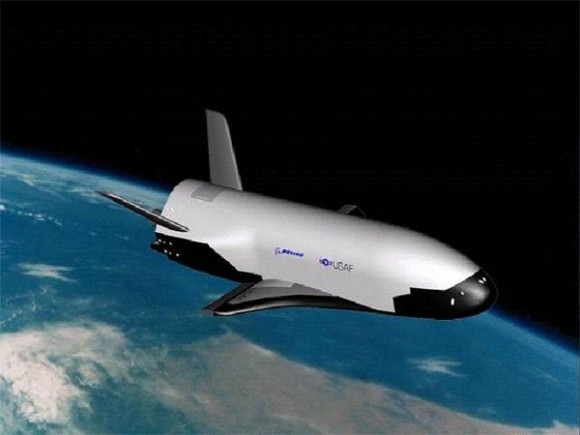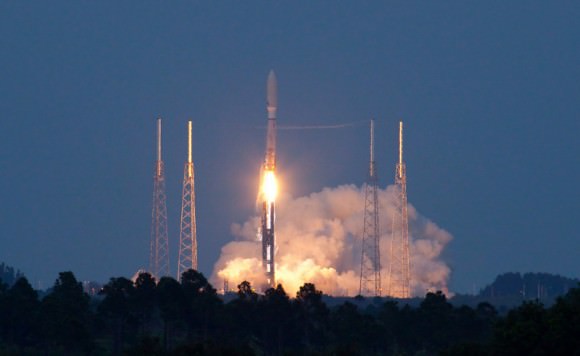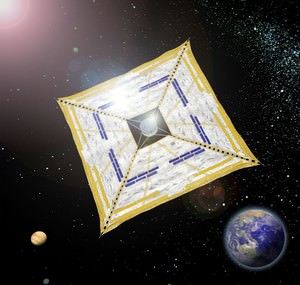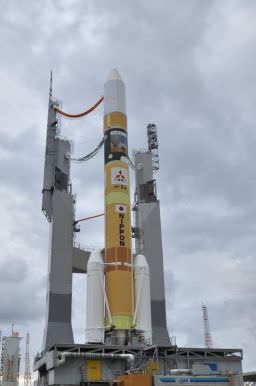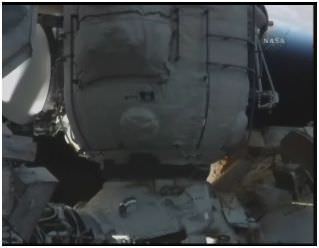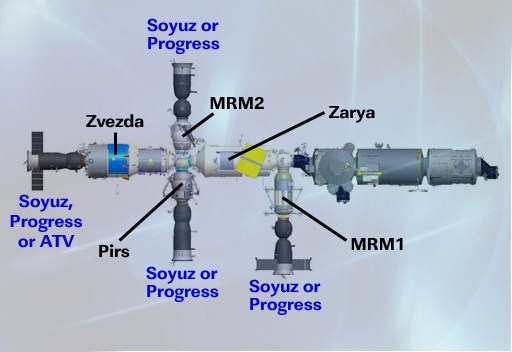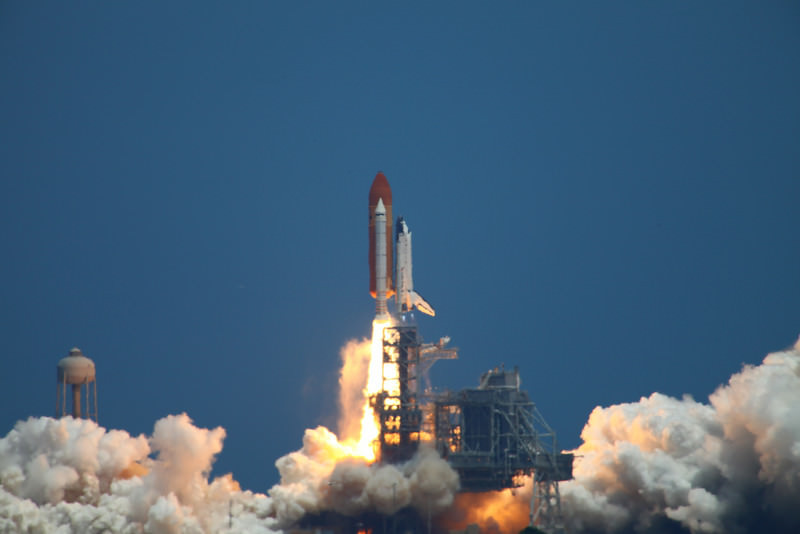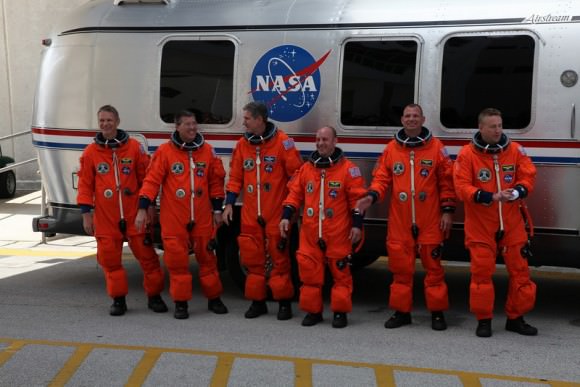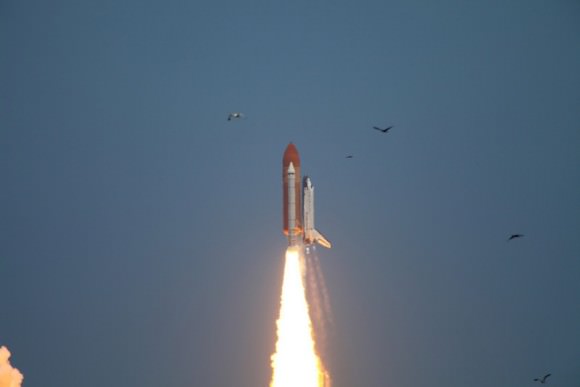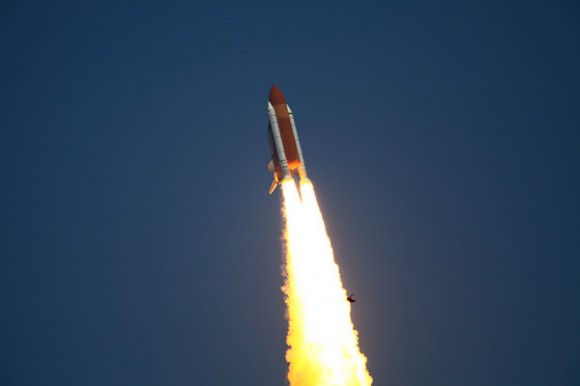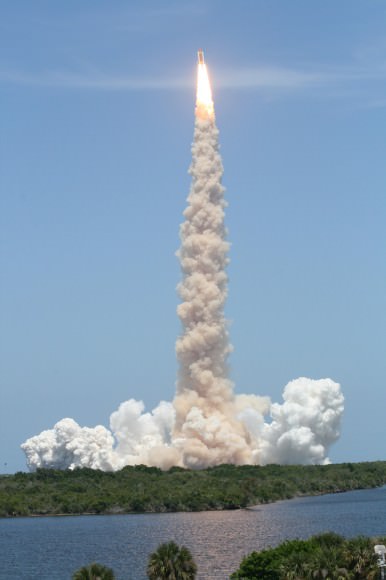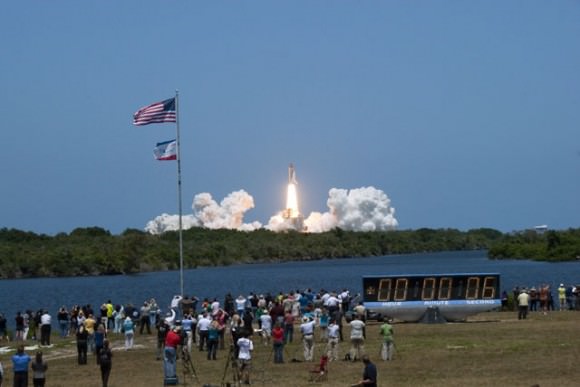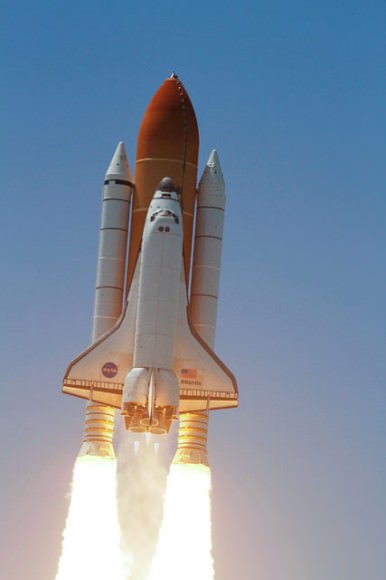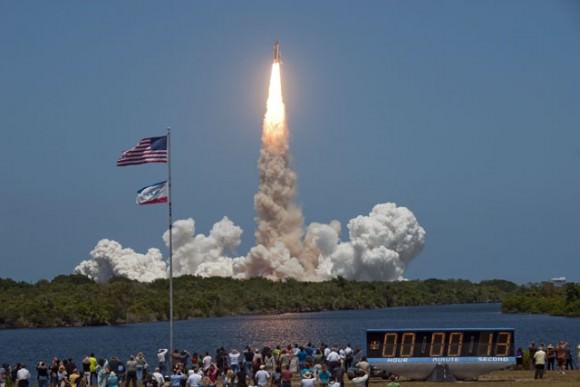[/caption]
The first Orion crew capsule is rapidly taking shape as assembly work to construct the skeletal framework of the first pathfinder Orion capsule – the Ground Test Article – or GTA, is nearing completion.
The Lockheed Martin team building Orion is just one weld away from completing the framework of an Orion cabin at NASA’s Michoud Assembly Facility in New Orleans. Precision welding to join together the final large skeletal segments (see my earlier report) has proceeded well according to Lockheed managers I spoke with.
“The Orion capsule is the Congressionally approved program of record and we are moving forward with it”, says Larry Price, Lockheed’s Orion Deputy Program Manager in an interview with me. “Our work is continuing with the funding which is still approved until September 2010. Orion is a very functional vehicle. All subsystems will be state of the art.
“Orion is not Apollo on Steroids”, Price emphasized.
“We are building on what is known and it’s a very contemporary approach. The flight avionics are very similar to commercial airliners. We can take advantage of the latest advances in avionics and computing. Orion has been designed for long duration interplanetary functionality to operate beyond Low Earth Orbit (LEO) for 6 months or more to visit the Moon, Asteroids, Lagrange points and other targets of interest for scientific investigation”, Price explained.
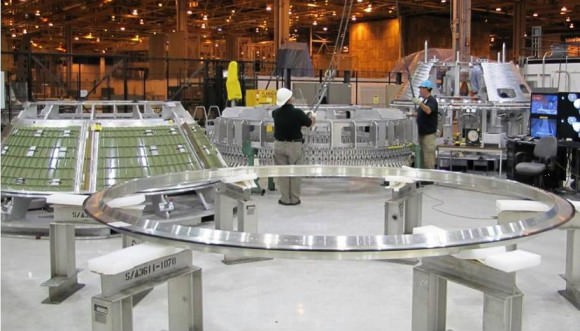
“The Orion project status is we have just one more weld remaining on the crew cabin”, says Tim Knowles. He is the Orion GTA Vehicle manager for Lockheed Martin and discussed Orion development in an interview with me. “When all follow on work to prepare the GTA is done, the final Orion GTA crew cabin will look very much like a real Orion capsule,” Knowles said.
“The final close out weld will join the Forward Cone Assembly and Crew Tunnel to the barrel shaped Aft Assembly. This combined piece then comprises the habitable volume and forms the first structural framework for the first Orion Crew Cabin”.
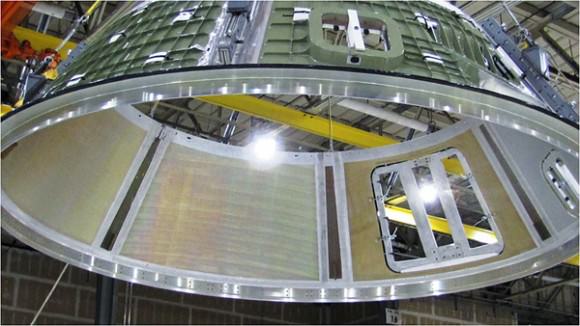
“The welding process uses a technique called Friction Stir Welding (FSW)”, Knowles said. “It has produced acceptable results so far. It’s a learning process and not flawless, and improves each time we do it” added Knowles.
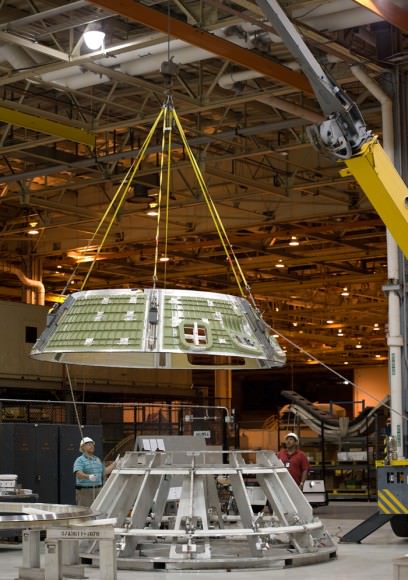
“We use sound to evaluate the work and detect any flaws”, explained Knowles. “The testing method is called Phased Array Ultrasonic Testing (PAUT). It’s a Non-Destruction Evaluation (NDE) technique. Remember, the GTA is intended as a manufacturing pathfinder as well as a structural test article”.
“The actual welding times to combine the individual segments requires only about 45 minutes to an hour. Of course the real trick to getting a good weld is that it takes many many days of preparation work to get the parts and equipment and everything else set up properly,” explained Knowles.

“Most of the work on the parts needed to complete the GTA after completion of the welding is well along. They will be installed inside following a pressure test of the crew cabin that is scheduled for June. These include mass and volume simulators for items like the crew seats and consoles, lockers, waste management etc. On the outside we’ll add simulators for the parachutes, compressed gases, propellants and thrusters all around the shell we welded together”.
“Then we’ll add the simulated [cone shaped] thermal protection system (TPS) aeroshell around that, including a few real TPS tiles. We will also add a heat shield.”
“When we are done adding everything, the final Orion GTA will look very much like a real flight article of the Orion capsule”.
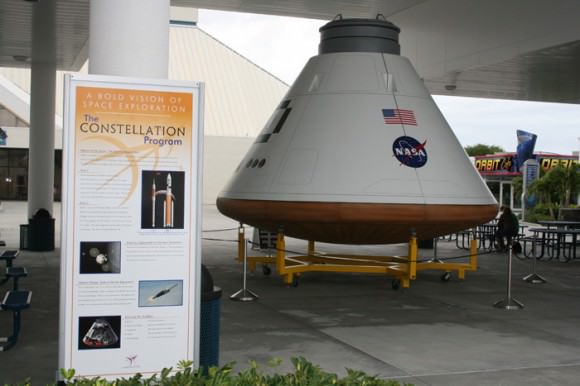
“The GTA will then be placed in a chamber and bombarded with acoustic energy for environmental correlation tests. These tests simulate the flight environment to collect data for the purpose of comparing the results to our predictive models, updating the models, and then refining the design of the crew cabin”.
“We are planning to ship the GTA to our Lockheed facility in Denver around the end of October. It will be integrated with a simulated Launch Abort System to form a launch abort vehicle (LAV) that will subjected to further vibro-acoustic tests next spring. Then the GTA crew module will be shipped to NASA Langley for water drop landing testing to simulate the impact. Those tests will run into 2012”.
“About 86 people are currently working on various aspects of the Orion GTA project at Michoud”, according to Lockheed spokesman Kevin Barre.
The GTA is a key pathfinder vehicle and the first full-sized, flight-like test article for Orion. It will be subjected to numerous stringent tests which are crucial learning exercises that will help validate the cabin design and will be used to incorporate changes to the tools and manufacturing processes that will eventually lead to a human rated production vehicle.
This Orion GTA capsule is an indispensible forerunner to the next generation Orion vehicle which NASA had planned for human flights to shot to the Moon and the International Space Station (ISS). It is not an unmanned “rescue capsule”, or lifeboat, as recently proposed by President Obama at his April 15 space policy speech at the Kennedy Space Center (KSC).
President Obama’s new announcement to resuscitate Orion as a “rescue capsule” was a significant refinement to his original plan of February 2010 to wholly terminate Orion and Project Constellation as part of his initial 2011 NASA Budget proposal which would radically alter the future path of NASA.
Related stories by Ken Kremer

